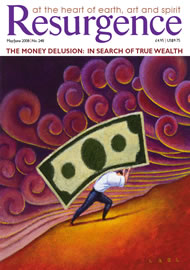WE CURRENTLY STAND waist deep in the Sixth Great Extinction. Entire species of flora and fauna are vanishing from the face of the Earth. We “lose a distinct species, of one sort or another, every ten minutes”. It is so huge a disaster that it is almost impossible to comprehend. Add to this the fact that these extinctions extend beyond what we consider the boundaries of the “natural world”, that by 2050 “most linguists agree that half the world’s languages will be gone”, and we feel truly overwhelmed.
One thing is clear: facts and figures will only take us so far. It is not enough to understand a topic such as this on a purely intellectual level: we need to feel that loss if we are to fully engage with the problem and plot the path to recovery. This is where the beauty of this book really lies, for while Terry Glavin presents us with enough scientific evidence to demonstrate the scale of the problem, he doesn’t bombard us with statistics; he tells us stories. The overarching narrative of the book is one “of imperial capitalism, deforestation, rapid human population growth, the rise of crop monoculture, enormous disparities in the distribution of wealth, a blind faith in free trade, and the obliteration of localised culture”. Not a happy tale. The message that resounds throughout is the absolute necessity of turning back this tide and the need to recognise the interconnected nature of our existence; that “all these extinctions are related”.
Each chapter brings us a different perspective on our loss. We are ushered into the world of the ‘living dead’, a term biologists use to describe “species that are not expected to escape extinction without significant human intervention”. These animals exist in the twilight zone of zoos, which Glavin convincingly argues fail in their stated role as ‘arks’, and the private collections of a few ridiculously wealthy and obsessive individuals. The logical conclusion of this, he contends, is a nightmarish vision of a world where wild animals no longer exist and all that remains are “animals we have chosen, with traits we have chosen, and in numbers we have chosen”.
The emotive subject of whaling is dealt with in an extremely even-handed, unsentimental manner. Without denying the obvious horror of industrial whaling the author argues strongly in favour of “the right of the world’s people to live sustainably on the natural resources around them”. Unafraid of the moral complexity of such issues, he asserts that to lose such communities would take us “that much closer to a monoculture”.
Finally we are taken on a journey into one of the epicentres of food-plant diversity, the Naga principality in the Patkai Range of the Eastern Himalayas. It is no coincidence that this area is also home to a huge range of culturally and linguistically distinct societies. The very same conditions that provide for the vast array of biota, a greatly varied topography producing a series of distinct microclimates, ensures the level of isolation required to allow distinct cultures and languages to flourish. We witness the blurring between wild and domesticated in the traditional agricultural methods of the indigenous peoples of the area and it is here that we see most clearly the interdependence of plants, animals, cultures and languages, and the potentially devastating effects of the global monoculture.
The task, then, is one of finding ways of “strengthening the conditions that allow the flourishing of a diversity of living things, a diversity of ideas, and a diversity of choices”. Dismissing environmentalism for its false division between Nature and humanity, the book invokes an “ancient and abiding” need for belief, as deep as our need for stories, to provide a fulcrum around which we can swing our society onto a new path. This belief has at its heart the simple fact that throughout his travels to document this appalling state of affairs the author found “absolutely no evidence that this is what humanity really wants”. Within each chapter we find points of hope, “offered as evidence for the defence”, be it in remote areas where diversity still flourishes or the local farmers’ market of Mayne Island. In this book Glavin continues the all-important work of knotting together these hints of a better world, bringing his pragmatic brand of optimism to even the bleakest of situations. Yet, as ever, it leaves that one question hanging in the air: “What, then, do we do?” From among these heartfelt tales comes an answer that is urgent yet simple: “You do what you can.”






